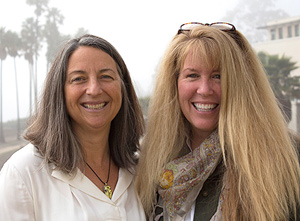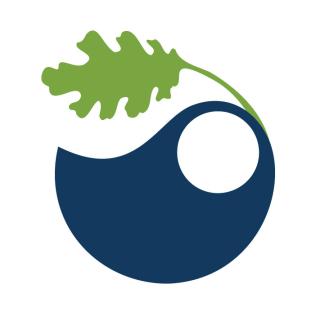Back in 1994, the Bren School existed solely on paper. In 1991, the UC Regents had approved the establishment of an interdisciplinary graduate school of environmental science and management at UC Santa Barbara. But that was all. The school had no name, no faculty, no staff, no building, no curriculum and, certainly, no students. It was a concept ready to be set into motion, potential about to be realized.
It was in those formative days that the colorful, widely recognized symbol we know now as the Bren School logo came into being. It was the creation of (below, from right) Mo Lovegreen, now director of campus sustainability at UCSB, and Megan Miley, a freelance designer and UCSB alumna. Together, they sat down with a blank page and no real guidelines to begin designing a logo.

Because the as-yet unnamed school would be environmentally focused, recalls Lovegreen, "We were looking to include and integrate elements from every part of the environment — air, land, water, and biomass."
"We were interested in the circular, cyclical nature of the environment and the relationships among the various components," Miley adds, "We wanted it to be planetary in nature."
They began with the sun and a wave, the latter echoing the wave motif on one version of the UCSB logo while referring to the ocean that edges the campus. Early versions included a lizard and, the designers laugh, "something identified with air." In another iteration, they tried to incorporate local history by including nature imagery from a Chumash medallion.
Of course, there was a leaf, but it began as a generic one. Later, the designers decided to make it a leaf from a local tree, and the oak-leaf flourish was born.

The final image — our beloved Bren School logo — incorporates a blue circle representing the Earth as a water planet; within it, a white circle representing the sun; the wave form at the top of the circle; the sky above it; and in that sky, a solitary oak leaf suggesting the oak-covered hills found throughout California's Central Coast.